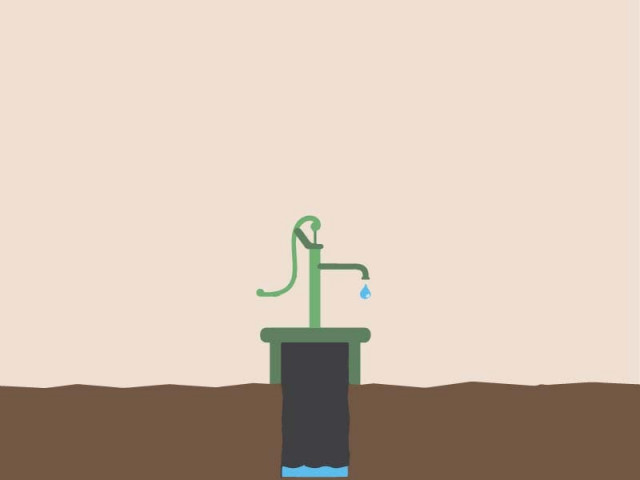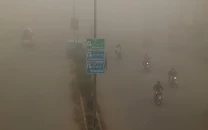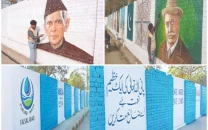Falling groundwater levels could trigger water scarcity in Lahore
While WASA says everything is under control, citizen accounts and govt surveys suggest otherwise

The depletion of groundwater resources in the provincial capital has reached concerning levels, showing an increase in arsenic saturation and hinting at a fate where the city of Lahore may soon find itself struggling for access to clean drinking water.
This transition, although inevitable, has not been slow. Four decades ago, brackish water was available some 45 feet underground, in Lahore. Ten years later, by 1990, it drooped to 70 feet; by the year 2000, it was 95 feet, dropping further to 125 feet by 2010. However, the latest studies suggest that groundwater could only be accessed at a depth of 155 feet in the year 2021.
As for potable water, up until the year 1980, it could be found some 200 feet underground. Whereas today, it takes digging down to at least 800 feet for clean water to ooze out, that too after being pumped. The actual groundwater currently sits at 1,300 feet below.
The groundwater table in Lahore is currently depleting at the incredulous rate of one meter per year.
In addition to that, the province’s fruit basket also appears to have a huge problem of water wastage from lack of conservation. Every year, almost 36 billion litres of rainwater flows into rivers without being stored or utilised, despite the city’s population now touching 20 million with an ever-growing need for clean water. Out of which, the Water and Sanitation Agency (WASA) only provides water to seven million people through tube wells that are widely known for exhausting groundwater resources.
WASA Deputy Managing Director Ghofran Ahmed however believes that they have overcome the issue of groundwater depletion by conserving substantial amounts of water and encouraging responsible water usage across the Mughal city. “Lahore’s daily water consumption is 480 million cubic gallons, out of which we are able to save over 160 million cubic gallons. This practice has substantially controlled the reduction of groundwater over the course of the last three years,” claimed Ahmed.
Addressing concerns of arsenic contamination, he said that WASA has set its own standards for safe and unsafe arsenic levels that are based on global standards. “In this regard water filtration plants have also been installed to provide quality water to the people. Besides, a metering system is also being installed for the prevention of water loss, using which consumers will be billed per their water usage,” he told, adding that the department has also placed penalties for water wastage.
Sources privy to the matter however believe that WASA has only been offering lip service, with no actual implementation plans for the water metering service. Per the Punjab government’s own survey, over 31 per cent of water samples collected from across the city were disclosed to be unsafe for drinking; rich in arsenic, turbidity, iron, and TDS.
Similarly, the citizens also believe that water contamination is still a pertinent issue, which leads to severe water wastage. Local accounts suggest that water drains are frequently polluted with dirt or sewage, which then contaminates the city’s water system. “My neighbourhood of Garhi Shahu is supplied with this contaminated water, which does not only have sewage particles in it but also high amounts of arsenic,” said Muhammad Aamir, who has to buy drinking water from private suppliers in Johar Town. “It’s hard to afford bottled water, but we can’t risk our children’s health. Most of old Lahore doesn’t have clean, drinking water but no one talks about it,” he lamentingly told The Express Tribune.
Published in The Express Tribune, March 25th, 2022.



















COMMENTS
Comments are moderated and generally will be posted if they are on-topic and not abusive.
For more information, please see our Comments FAQ